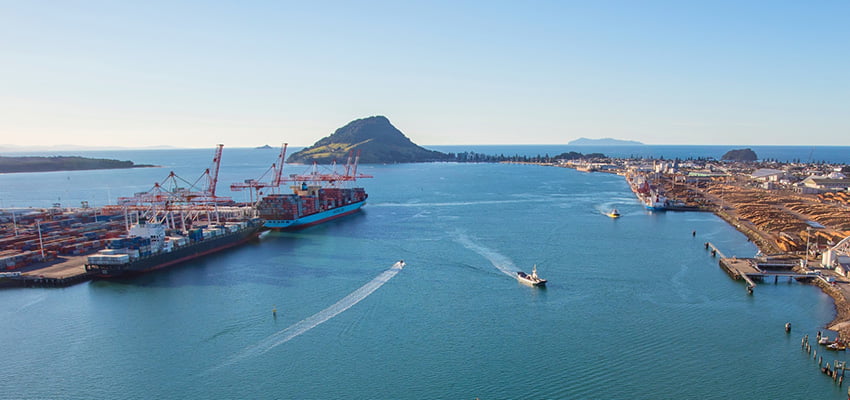A NZ$49m (AU$47.1m) net profit for the first six months of the 2019 financial year was a highlight for the Port of Tauranga.
In results published this week, Tauranga reported increased cargo volumes contributing to a 4% increase in group net profit after tax to $49m.
Highlights were:
Total trade increased 8.8% to nearly 13.6m tonnes;
- Container volumes grew 5.1% to 621,117 TEU;
GNPAT increased 4%, to $49m for the six months to 31 December 2018;
- Transhipment growth continued, with volumes increasing 18.9% to 174,983 TEU;
Imports increased 5.7% from 4.7m tonnes to almost 5m tonnes;
- Exports rose 10.8% from 7.7m tonnes to 8.6m tonnes, with an increase in log exports (up 11.7%);
- Interim dividend of NZ6 cents a share, up 5.3% on the previous period’s dividend.
Half year trade volumes grew 8.8% overall.
Port of Tauranga chair David Pilkington said the results were pleasing.
“Group operating profit grew 4.0% in the first half of the financial year. Tauranga is working very well as an international hub port for shippers looking to quickly and efficiently access large ship container services,” Mr Pilkington said.
“Tauranga is the only New Zealand port that can easily accommodate these big ships and we are very pleased by the amount of transhipment occurring from other New Zealand locations as well as Australia.”
Bulk cargo volumes also grew, reportedly due to an increase in log exports as well as kiwifruit, meat and apples.
Port of Tauranga’s inland freight hub, MetroPort Auckland, reported a 3.8% increase in containers handlings to set a new record in cargo transferred by rail to and from Auckland during the October to December seasonal peak.
Port of Tauranga chief executive, Mark Cairns, said it was pleasing KiwiRail had been able to gear up quickly to transfer shipments diverted to Tauranga.
“It has been two and a half years since the successful completion of our expansion program to accommodate larger ships,” Mr Cairns said.
“All evidence points to a continuing trend to larger vessels. Our strategy to create long term value for our shareholders is clearly working and we are now planning for the next stage of cargo growth.”
A ninth container crane also has been ordered for delivery in 2020 and preparations are under way to extend the container terminal quay by 385 metres by converting port-owned land south of the existing 770-metre quay. The company is assessing options for increasing container storage and handling capacity.
Reconfiguration of existing wharf space is under way on both sides of the harbour to ensure efficient cargo handling.
“We also have the capacity to increase train frequency in future as required,” Mr Cairns said.
Rail is Port of Tauranga’s preferred mode of cargo transfer due to its environmental benefits and to avoid contributing to road congestion.
“Long term value creation for our shareholders is only possible if we keep up our efforts to enhance our environmental performance, our relationships with our employees, our suppliers and our community,” Mr Cairns said.
Port of Tauranga has renewed its long-term operating agreement with Oji Fibre Solutions, New Zealand’s major manufacturer of market kraft pulps.
Cargo trends Log exports remain buoyant on the back of strong demand from China and record international prices.
Kiwifruit volumes increased 30.2% compared with the previous corresponding period, with the trend continuing towards refrigerated containerisation of kiwifruit exports.

